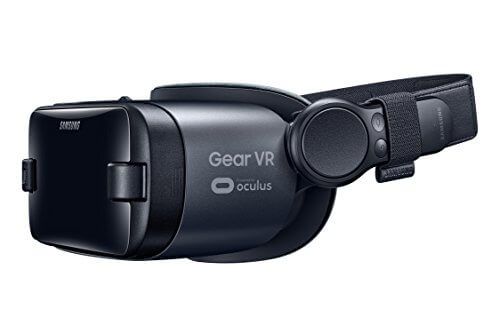Past, Present, and Future of Gear VR
The Gear VR is a mobile powered VR headset developed by Samsung in partnership with Oculus. The headset was first announced in 2014 to allow developers to produce content for the headset. Two innovator editions were released prior to the consumer version. The headset was later released in November 2015.
The Gear VR is specifically compatible with Samsung line of Galaxy smartphones. The supported phones are S6, S6 Edge, Note 5, S7, S7 Edge, S8, S8+, and Note 8. The headset features 3 degrees of freedom, which means these phone can track head movements. However, it is not capable to track on a room-scale.

Image credit: Samsung
The headset is visually calibrated through the wheel located on the top of the headset. A trackpad is positioned on right side, alongside with the volume button. The newer editions comes with a remote control. It has a home button, back button, volume control, a trigger, and a click pad. The controller can be waved to track motion, and runs on two AAA batteries rather than USB charging. However, the controller only fully support a handful of apps such as Hulu, AltspaceVR, Wands, and Singspace. Older apps can still be accessed through the controller’s touchpad. Samsung promises that the controller will support more apps in the future.
Since Facebook acquired Oculus, the app that runs the Galaxy phone on Gear VR defaults to a Facebook sign-in. When inside the virtual world, Oculus Home is the main portal to download and enjoy content on the Gear VR. The device contains more apps than the Google Daydream View headset, but the Daydream headset is definitely more ergonomic and less bulky.
Gear VR is best known for over heating after long usage. Latest Oculus software update significantly upgraded power efficiency, which improves overheating and power drainage.
The Gear VR is a free bundle if customer purchases a Galaxy S8 phone. However, one would need to play $130 for the headset and controller on its own.
So far Gear VR provides the best mobile VR experience. Nevertheless, as VR continues to involve, we can anticipate new features such as room-scale tracking, as well as augmented reality for future models.
Future of Gear VR
In February 2018, Qualcomm’s annoucned the latest Snapdragon 845 platform will power the Samsung Galaxy S9. According to Qualcomm, this platform will might provide 6 degrees of freedom that would allow the user to walk around in room-scale setting. However, Samsung reports that the S9 will remain at 3 DoF. This probaly means Samsung likely hasn’t yet initiated this feature on this generation device.
